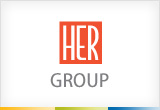The Reasons Behind the Development of (Yet Another) SaaS Benchmark and Our Collection of ...
We investigate private firm SaaS benchmarks in this two-part series. Part I explains the motivation behind our benchmark and the lessons we took away from previous standards. Part II lists our SaaS criteria for 2022 and explains how to put them into practice.
Why Another SaaS Benchmark, you ask?
What constitutes high success for businesses similar to mine, question our portfolio firms' founders frequently?
It varies.
As a former management consultant, "it depends" is undoubtedly the most appropriate response, but more details can be gleaned to aid in decision-making. We cherish the clarity that results from developing an outlook on exceptional achievement. In the first of these two blog posts, we outline our methodology and results for determining the median and top quartile performance.
Some could argue that we reinvented the wheel. In the past few of years, numerous companies have released SaaS benchmarks. Why make a new one?
MedsDental is a renowned Dental Billing Company in the united states, equipped of the revenue cycle experts who are highly proficient in delivering fast and the error-free billing services to the dental practices by using the cutting edge technology.
To solve the problem of comparing different standards, we developed our own benchmark. Our objective is to offer a transparent, applicable, and user-friendly benchmark. We believe using our standards will be beneficial for startup executives and investors. We provide best practices for putting these standards and guidelines into effect when making judgments.
SaaS performance is the subject of a wealth of publicly available information. bootstrapped to venture-backed, private to public businesses. Excellent research was done. A book on their benchmarks was written by Scale VP.
Reviewing these benchmarks taught us so much that we decided to share our knowledge in the SaaS Benchmark Crash Course that is provided below.
Consider comparing the median ARR increase across published benchmarks as an example:
Various sources' line graphs showing Annual Recurring Revenue Growth by Revenue Band
For startups with $3 to $5 million in ARR, the median annual recurring revenue increase ranges from 40% to 220%. What range should we use while analyzing a potential investment? To a portfolio organization?
We'll discuss why the variation between benchmarks is neither surprising nor troublesome in Part II. By taking into account selection biases, variations in data collecting, and subtleties in calculation, we can more accurately interpret and utilize these ranges in practice. We'll also create a meta benchmark based on a trimmed mean to handle the practical problem of having ranges. We'll describe our approach, results, and major conclusions.
Let's start by discussing what we discovered through previous research.
Private-Company SaaS Benchmarks We've Collected
We looked at seven private SaaS company benchmarks:
a list of references and explanations
Company selection, data gathering, and measurements were the main distinctions between benchmark sets.Managing the billing process accurately is not easy as providers might face hurdles in revenue cycle management. Moreover, Net Collection Rate below 95% shows that your practice is facing troubles in the billing process. To eliminate all these hurdles and maintain your NCR up to 96%, MedsIT Nexus Medical Coding Services are around the corner for you so that your practice does not have to face a loss.
1. Company selection: The selection of businesses for each benchmark.
The SaaS benchmark used by Bessemer included their 200+ cloud investment holdings from 2010 to 2021 (details below). Bessemer benchmarks had a higher skew than other benchmarks because they were built using portfolio firms (pre-screened for performance).
A mixture of venture-backed and bootstrapped businesses was one of the additional benchmarks. For SaaS and subscription firms, Capchase (a Thomvest portfolio company) offers non-dilutive dynamic growth financing. Data from customers, including VC-backed and bootstrapped businesses, was used to create its benchmark. This benchmark may offer a more accurate frame of reference for early-stage SaaS success because it is typically easier to get growth capital than to secure a venture equity investment.

